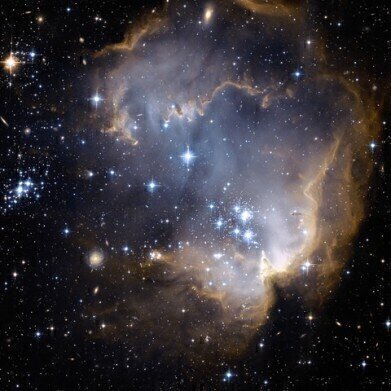GC, MDGC
Life’s Sweet Sugars Made in Space?
Jun 06 2016
The origin of life on Earth is a question that many people speculate on — but no one yet knows the definitive answer to. There are essentially two main camps — either life originated on Earth or in outer space. Both camps have their theories and evidence that back up their claim that life — or rather the precursor molecules considered essential for life — formed on Earth in volcanically driven smokers deep under the ocean or formed on comets and rained down on Earth riding on meteorites.
A recent paper — Ribose and related sugars from ultraviolet irradiation of interstellar ice analogs published in Science — has added weight to the scenario that life began in space — and multidimensional gas chromatography played a key role in the story.
Find the ribose
Two of the compounds that are crucial for life on Earth are DNA and RNA — deoxyribonucleic acid and ribonucleic acid. Nucleic acids — along with proteins and complex carbohydrates — are at the heart of life as we know it and between them code and decode, regulate and express, and carry all of the information essential for life to prosper and evolve.
Before Cornelia Meinert, lead author, and the team carried out the work subsequently published in Science — a key piece of evidence in the puzzle that supports the theory that life began in space was missing. The main bases that make up DNA and RNA — including uracil, thymine and cytosine — had been detected in space or created in space simulation experiments, and amino acids — used to make proteins — have also been detected. But ribose — a simple sugar molecule needed to make RNA —hadn’t been detected in space simulations or space itself.
Many scientists believe that RNA is an older molecule than DNA, but with ribose requiring certain conditions to form — and those conditions not being around on the prebiotic Earth — where did the ribose come from?
Sugar in space
This is the question that Meinert and colleagues set out to answer — could ribose be formed in space? Over a six-day period they recreated cometary ice starting with water, methanol and ammonia — molecules in plentiful supply at the dawn of the solar system. They put the chemicals under vacuum, irradiated them with ultraviolet light to imitate the harsh interstellar conditions and cooled to around 80 Kelvin — almost minus 200?C — conditions that would have been present as the solar system formed. The mixture was then warmed causing the volatile molecules to sublimate — forming ‘cometary ice’.
The team then analysed the mix and detected a variety of sugar molecules — including ribose. In a news report, Meinert said that it was the use of multidimensional gas chromatography (MDGC) that allowed the ribose to be seen for the first time. MDGC offers higher resolution than GC as discussed in this article, A Multi-Platform Approach for Metabolomic Analysis of Human Liver Tissues.
The findings mean that life could have started out in space — we might not be alone.
Events
Jan 20 2025 Amsterdam, Netherlands
Feb 03 2025 Dubai, UAE
Feb 05 2025 Guangzhou, China
Mar 01 2025 Boston, MA, USA
Mar 04 2025 Berlin, Germany














